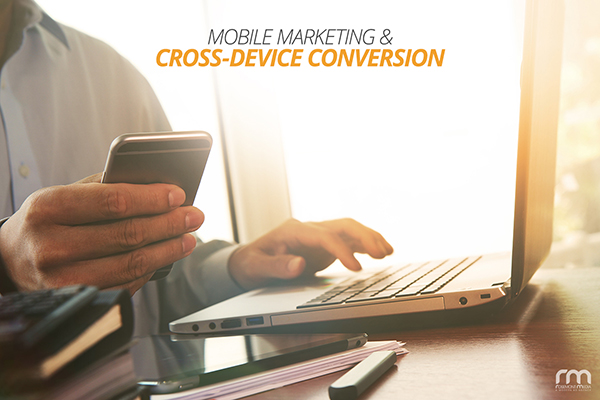Mobile Marketing & the Beauty of Cross-Device Conversion

When was the last time you looked at your smartphone or tablet? Ten minutes ago? Two hours ago? This morning when you woke up? Most likely, you checked a mobile device at some point today, and you’re probably going to do so again at least once before the day is over. And guess what? You’re not alone.
According to an Internet Trends Report conducted by Kleiner, Perkins, Caufield & Byers, the average person will check their smartphone a total of 150 times throughout the day. Whether we’re using them to receive and send emails, research a topic of interest, or simply view the day’s weather forecast, mobile devices have become an integral part of our lives. In fact, many people never leave home (or even a room, for that matter) without them.
The convenience of these smartphones and tablets enables us to search for and find what we want in the exact moment we desire to do so. As a result, the number of searches conducted via mobile devices is now greater than that of desktop computers. That said, time spent on websites per mobile visit is actually quite low.
What does this tell us? As it pertains to you, it lets us know that patients are making more informed decisions about their prospective treatment(s) quicker than ever before. If they don’t find relevant information on a mobile website right away, they move on; if they do find relevant information, they’re likely to take action immediately, or embark upon the consumer journey. This is where cross-device conversion comes into play.
What Is Cross-Device Conversion?
Cross-device conversion is when the consumer journey begins on one device and ends with a purchase/action made on a different device. For instance, if someone is interested in a facelift, they may start their consumer journey by using a mobile device to research “Facelift Benefits.” When they discover your recent blog post that lists the many benefits of a facelift, they may wish to conduct more extensive research on your website since the post they read proved so informative. To do this, they might choose to visit your site on a desktop computer where they are able to easily access every bit of information you have on facelift surgery, eventually leading them to schedule a consultation at your practice.
Why Is Cross-Device Conversion Important for My Practice?
As you can see in the example above, just because the individual used their desktop computer to schedule a consultation doesn’t mean your practice’s mobile presence didn’t play a vital role in the grand scheme of their consumer journey. Without a strong mobile presence, the patient may never have come across your blog post in the initial phase of research, significantly reducing their chances of discovering your practice and ultimately scheduling a consultation. After all, most online searches are conducted on mobile devices, remember?
Tracking Cross-Device Conversions
They key to tracking cross-device conversions is to stop viewing your mobile and desktop conversions as separate statistics. Whether it’s clicking on a mobile ad or looking at before-and-after photos on your desktop site, remember that every action a potential patient makes is a valuable part of their consumer journey, as well as your overall online campaign. Google offers a conversion tracking tool through AdWords that allows you to see what happens after a visitor clicks on your ads, enabling you to attribute your conversions to the correct campaign regardless of which device was used to make the final action. With the amount of cross-device traffic generated today, this data is invaluable to your Internet marketing success.
Pro Tips:
- The importance of a mobile-friendly website cannot be overstated – your mobile strategy should work to complement and support your overall online marketing plan, ultimately helping to boost cross-device conversion.
- Strive to be in the moment throughout the entire consumer journey by anticipating what your patients may want to learn and/or do – write and publish blog posts that provide answers to questions you hear often, or buy mobile ads that can be run based on related searches.
- Ensure your site is user-friendly and your content is relevant – in today’s fast-paced world, no one will spend time on a site that is slow to load and hard to navigate, let alone when the content is shallow and/or unrelated to their search.
- Mobile searches help people initiate and “chip away” at the research process – remember, receiving elective healthcare is a big decision that takes time to make. When people use their mobile devices to conduct research, you want to be there every step of the way.
Contact Rosemont Media
If you have any questions about mobile marketing for surgeons and dentists, or if you need help monitoring and analyzing your cross-device conversions, please contact Rosemont Media today.
Mobile Usage by the Numbers
- From 2014 to 2015, mobile conversion rates increased by 29% (Google Analytics aggregated data, 2014–2015 for April 1–14, U.S.)
- 82% of people with smartphones use them to help them make a product decision (Google/Ipsos, “Consumers in the Micro-Moment” study, March 2015, U.S.)
- 40% of individuals who conduct research on their mobile device eventually make their purchase on a computer. (Google/IAB “Our Mobile Planet”, May 2013.)